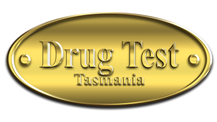Five Ways to Minimise Impact of a New Drug Testing Program

How To Lose Half Your Workforce When Drug Testing – And How Not To!
Local media has recently reported many Tasmanian Employers choose not to implement drug & alcohol testing of workers for fear of losing much of their workforce. This is a common concern however it is one that can be easily addressed with proper structure and strategy when it comes to drug and alcohol programs.
Employers who may have experienced this type of drug testing impact on their workforce likely had missing pieces in what can be a puzzle when it comes to a fit for work program.
So here are 5 ways to lose half of your workforce when rolling out a new drug testing program – and how not to!
Implement a 1 strike zero tolerance policy and procedure – OR not.
Use a more balanced 2 or 3 strike approach.
It comes as a surprise to many Employers that a lot of drug testing programs adopt a 2 or 3 strike approach. Such programs balance fairness and discipline and take the approach of supporting workers around drug & alcohol use rather than using the “big stick” approach. Typically the first or second “strike” triggers a requirement for counselling, further education and/or increased testing on that person for a period of time. All of these strategies assist to manage the risk of further issues with that person ongoing.
Use urine testing to test for history of drug use extending weeks in some cases – OR not.
Use saliva drug testing which relates to recent drug use only and is most relevant to safety. Many drug testing providers have a great sales pitch when it comes to urine testing programs. However proper investigation reveals saliva drug testing is the most relevant to drug & alcohol risk in the workplace, more happily accepted by a workforce and the most popular method for Employers commencing a new drug & alcohol program.
Launch your drug & alcohol program and commence testing without proper education of your workforce – OR not.
Delivering drug & alcohol awareness induction training will help your workers manage their own safety. Your workers should be informed why testing is commencing, how it works, what are the expectations around drug & alcohol use, what is the disciplinary process and how long drugs and alcohol may impact your safety in the workplace following use. Think WHAT, WHY, WHEN and HOW with the above and also with the following. It is far easier to change the culture of your workplace when workers understand the WHY, plus HOW they can manage their own safety at work. They should also understand WHEN they can be tested such as random, incident and suspicion circumstances.
Blanket test all of your workers at the time you roll out the new drug testing program – OR not.
By testing smaller groups of your workforce more frequently you will reduce any sudden impact effects on your workforce. Deterrent effect should be the key goal of your approach to testing. Anytime the drug and alcohol testing takes place ALL workers are potentially about to be tested. That risk of being tested can be just as powerful a deterrent as actually being tested.
Blanket testing may still be a sound strategy to demonstrate an Employers commitment to risk management of drugs and alcohol and gain some insight into drug use at a workplace. If you do wish to test all workers at implementation consider the use of a moratorium where no disciplinary action will be taken on the first round of testing.
Choose an alcohol limit of zero – OR not.
Alcohol limits used by different workplaces include zero, 0.020% and 0.050%. Drug Test Tasmania are strong supporters of a zero limit for alcohol at work. However, the alcohol level for your workplace must reflect your specific overall risk profile, type of operational duties and real-world practicality. It may also be reasonable in some cases to use different alcohol limits when particular duties are being performed or rostered to occur.
